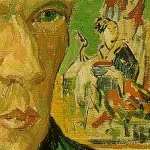
Several years ago, I wrote a short story in which a wife follows her husband to the site of what she thinks will be an adulterous liaison. At the last moment the wife changes her mind and decides not to confront her husband. She turns around, leaves the hotel parking lot, and heads back the other way toward home. For convenience more than anything else I set the story in a part of southern Maryland that I knew fairly well. In fact, the hotel where I decided the liaison would take place actually exists on Maryland Highway 301, near LaPlata. However, the scene as I imagined it only worked logistically if the hotel stood on the right side of the highway as one drove south, as the wife character did. For the sake of my story, the wife had to take a right hand turn into the hotel from 301, but go back in the opposite direction--northward--when heading home. Problem: the hotel in question doesn't sit on the right side of Highway 301 as you head south. It sits on the left side. In fact, there is no hotel on right side of that stretch of highway. So, I asked myself, what should I do? I actually did worry about this, especially if some squirrelly grandma southern Maryland reader got his or her paws on my story, but finally I decided that verisimilitude was a lot less important to the story than that my scene be allowed to play out as I imagined it. So what did I do? Simple: I moved the hotel to the other side of the highway. Problem solved! Whether or not this would satisfy the famously scrupulous fact checkers at The Atlantic I have no idea, but since the story did not appear in The Atlantic but a different literary journal, who cares.
I ran into a similar situation last May when I took a third visit to the "Pont Van Gogh" outside Arles. (See previous posts.) Staring again at the house sitting just behind the little drawbridge --a drawbridge identical to the one portrayed in Van Gogh's The Langlois Bridge at Arles with Women Washing and other paintings--I realized for the first time that I was looking at the back of the house. Wait a minute?! (Checking the above picture, it's probably perfectly apparent to you that what you are looking at the back of a house. What I can say? I can be awfully slow at times.) There are two small canals in the area and they run parallel to each other. The drawbridge in question spans one, the front of the house in question faces the other. This would not be a problem except that in my novel Van Gogh walks out from Arles to the drawbridge and while enjoying the view of the homey little edifice, he spots the bridgemaster coming out of his house via the front door. This, as it turned out, would be physically impossible as Van Gogh would not even be able to see the man's front door. So, again, I had to ask myself: What do I do? I could have the man come out the back, but this seemed unlikely and would also be increasingly awkward, as the scene also features the bridgemaster's wife and one of his daughters coming out of, and going into, the house. Also, since on my third visit to Pont Van Gogh I finally circumnavigated the house and rendered some very particular drawings of its front, I decided that the front of the house was a piece of scenery I really wanted in my novel. So in the end I had three choices: 1) Ditch the scene; 2) move the drawbridge to the other canal; or 3) turn the house around, so its front faced the bridge. Of these three options, #3 seemed the least drastic, the easiest, and the one that best allowed my scene to do the work it needed to do. In fiction writing classes we talk about staying true to what the story needs rather than what a reader or the author wants, we talk about a hierarchy that puts the story at top, the reader second, and the author last. Sometimes "giving the story what it needs" can be as broad as completely changing the plot, adding a character or characters, or moving the action to a whole other part of the world. On the other hand, sometimes it simply means turning a house around. I'm not sure if such a move would be sanctioned by the Guardians of Purity in creative nonfiction writing, but to me a little move like this is exactly what the freedom--and the responsibility--of fiction writing means. Giving your story what it needs. And it's also why I declare, and will keeping declaring until I am out of breath, that my Van Gogh book is a novel not a biography. That single word designates something crucial, not just about what happens inside the book but about my entire method of composition.
That said, it's certainly true that we writers of historical fiction research our subjects thoroughly in order to render accurate pictures of past peoples, costumes, and geographies. Other posts on this blog have detailed just such efforts. And later ones likely will too. So when, in the making of historical fiction, is it okay to depart knowingly from strict factuality? How much leeway do we give ourselves, and why? Anyone care to comment? Advise?













0 comments:
Post a Comment